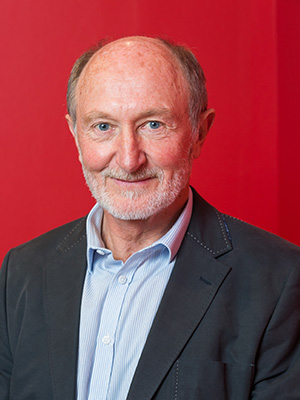
06 Oct Q3 2016
The fiscal restraint imposed on the world as a result of the global financial crisis has markedly curbed excessive budget deficits. Since the depths of the recession in 2010, the OECD countries have cut their overall deficits from 8.0% to 3.2% in 2015. [CHART 1] Nevertheless, as deficits have still been incurred (albeit at much lower levels), debt levels have continued to rise and are now even higher than they were in 2007. [CHART 2] These high debt levels and gridlocked politics have prevented governments from adding fiscal stimulus to their central banks’ monetary initiatives. A prolonged period of slow growth has been the result. [CHART 3]
With monetary policy stretched to unprecedented levels – and declining in effectiveness – demands for fiscal stimulus have become a growing clarion call. The IMF has been advocating this since early 2015 with only very limited response. In certain of the major economies (Canada, Japan, China, and South Korea) and in some emerging markets, there have been modest shifts towards larger fiscal deficits. Even in the United States, the fiscal squeeze of recent years has eased slightly. However, these tentative moves have been restrained, and not universally accepted. Of the majors, Germany has been an outspoken critic, with its Finance Minister saying that ‘the debt-financed growth model has reached its limits’.
At the G20 meeting in China in early September, a number of leaders stressed the need for governments to do more to support growth. But the meeting’s concluding communique disappointed as there was no mention of a growth-boosting package of fiscal and structural reforms – as occurred in 2009.
Nevertheless, at the press conference after the meeting, President Xi said G20 members ‘agreed, and are determined, to revitalize global trade and investment as key engines of growth’. They would also oppose protectionism and unlock global trade co-operation (eat your heart out Donald Trump!).
The recent data indicate that the global economy appears to be recovering, but off a very low base. It is, however, likely to remain anaemic unless vigorous fiscal spending takes place in the major industrialised economies. Although promised at the G20 meeting, no concrete proposals were outlined and many spending programs (such as infrastructure projects) take time to get underway. And all will need parliamentary approvals which cannot be taken for granted despite rising populist pressures.
In the US there is a clear need to pursue infrastructure spending, but the debate will not even commence until after the elections and the scale will obviously depend crucially on which candidate makes it to the White House. Even if Trump wins, memories of how overspending and debt accumulation triggered the great recession remain deeply embedded in the psyche of the lawmakers.
This probably means that the greater the stimulus plan, the less likely it will gain approval.
Consensus forecasts of global growth are uninspiring: 2.4% for 2016 and only slightly higher at 2.7% in 2017.
Slower growth is forecast for developed economies (OECD 1.8% in 2016 and 2.0% in 2017). Nonetheless, global analysts are optimistic: consensus forecasts are for earnings growth of 13.1% in 2017 and 11.5% in 2018. [CHART 4] Although much of this is due to a predicted recovery in the energy sector, we are sceptical they will be achieved unless aggressive fiscal action is indeed introduced.
The key side-effect of the 2008/9 recession – unprecedentedly low (and negative) interest rates – has provided a unique opportunity for funding new projects at low (or no) interest cost. And, as long as rates remain low, rolling over maturing debt in years to come will immediately benefit a country’s interest burden.
If meaningful fiscal programs are introduced following the G20 meeting, the outlook for equities will improve, possibly significantly. Historical studies have shown that stronger economic growth levers up earnings in a multiplier fashion.
With equity valuations at elevated levels, earnings growth is sorely needed to justify current prices. If analysts’ optimistic projections are met, the global p/e will fall below the historical average – but only by mid 2018.



















